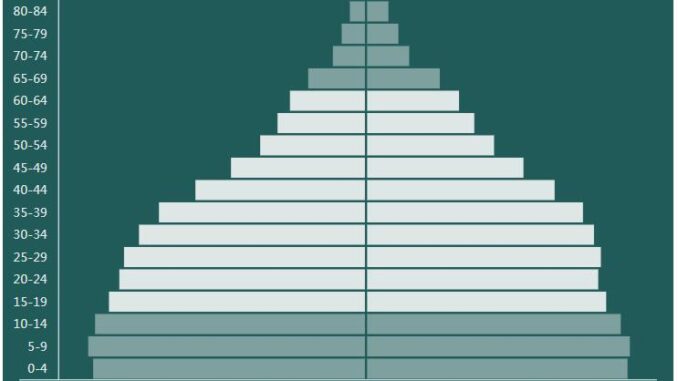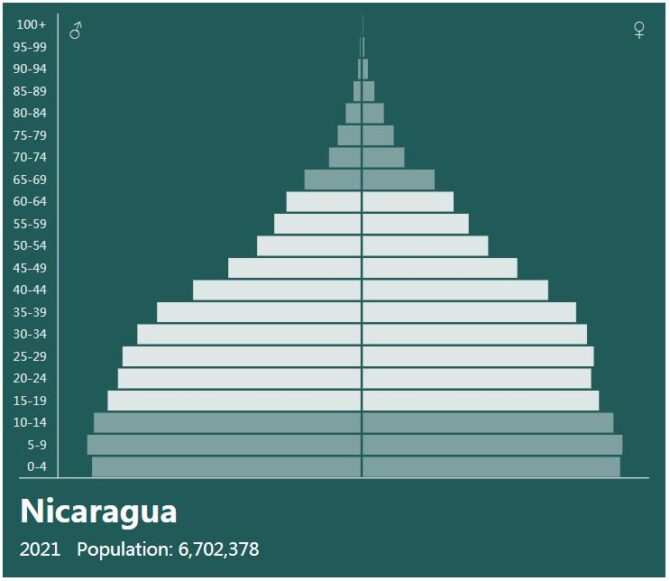
Yearbook 2000
Nicaragua. The ratification of a border agreement between Honduras and Colombia at the beginning of the year led to a diplomatic crisis between Nicaragua and Honduras, as it strengthened Colombia’s territorial demands on an area in the Caribbean that is rich in oil and natural gas and also claimed by Nicaragua. In February, an incident occurred in the Gulf of Fonseca between naval vessels from Nicaragua and Honduras. In June, a border agreement was signed with Costa Rica on shipping on the San Juan River.
After 21 years, Nicaragua and the United States have re-established military relations. General Manuel Salvatierra, a veteran of the war against the US-backed contras in the 1980s, has been accredited as a military attaché at Nicaragua’s Embassy in Washington. The appointment is of great symbolic significance; the last traces of the Cold War have thus definitely been eliminated in the countries’ relations.
In the November mayoral election, the ruling party won the PLC (Partido Liberal Constitucionalista) in most cities, but the Sandinists won the prestigious post in the capital Managua.
- ABBREVIATIONFINDER: Offers three letter and two letter abbreviations for the country of Nicaragua. Also covers country profile such as geography, society and economy.
Country data
Area: 120,254 km2 (world rank: 97)
Population: 6,218,000
Population density: 52 per km2 (as of 2017, world rank: 109)
Capital: Managua
Official languages: Spanish
Gross domestic product: 13.8 billion US $; Real growth: 4.9%
Gross national product (GNP, per resident and year): 2130 US$
Currency: 1 Córdoba (C $) = 100 Centavos
Embassy
Joachim-Karnatz-Allee 45, 10557 Berlin
Telephone 030 2064380,
Fax 030 22487891 www.nicaraguaportal. de
Government
Head of State and Government: Daniel Ortega SaavedraRosario Murillo Zambrana, Exterior: Denis Moncada Colindres
National Day: 15.9.
Administrative structure
15 departments and 2 autonomous regions
State and form of government
Constitution of 1987
Presidential Republic
Parliament: National Assembly (Asamblea Nacional) with 92 members (90 elected, 2 ex officio), election every 5 years
Direct election of the head of state every 5 years
Suffrage from 16 J.
Population of: Nicaraguans, last census 2005: 5,142,098 residents
70% European-indigenous, 18% European, 9% African origin, 4% indigenous (especially Miskito, Chorotega-Nahua-Mange)
Cities (with population): (As of 2016) Managua 1,033,622 inh., León 169,362, Tipitapa 127,618, Masaya 125,824, Chinandega 111,256, Ciudad Sandino 110,083, Estelí 105,709, Matagalpa 103,860, Granada 100,496
Religions: 59% Catholics, 22% Protestants, 16% without religion; indigenous religions (as of 2006)
Languages: Spanish; indigenous languages, English Creole
Workers by economic sector: agriculture. 29%, industry 18%, business 53% (2017)
Unemployment (in% of the labor force)
2017: 4.4%
Inflation rate (in%): 2017: 3.9%
Foreign trade: Import: 7.1 billion US $ (2017); Export: 5.2 billion US $ (2017)
Climate
Always humid tropics ; short dry season in winter on the Pacific side. On the Caribbean coast, the rainy season lasts up to 9 months. Cyclones also frequently occur there.
Population 2000
According to COUNTRYAAH, the population of Nicaragua in 2000 was 5,069,191, ranking number 110 in the world. The population growth rate was 1.730% yearly, and the population density was 42.1248 people per km2.
Population. – The administrative departments, from 15 that were, have become 17; the two newly established departments are named after the capitals: Boaco and Somoto. The two cities are located on the central plateau, the first near the source of the Coco River, the other north of Lake Nicaragua. Local sources (Ministerio de la gubernación) now estimate the surface of the republic at 118,453 sq km. (without the lake areas which are about 9,000 sq. km.). The same sources state that the total population in 1940 was equivalent to 1.381.146 residents (dens. 11.6), with an average annual increase of about 10% compared to the 1932 census. According to other sources (United Nations monthly bulletin), the population was 983,000. in 1940, and of 1,122,000 residents about 1945 (dens. about 9.1). Half of the population is made up of Mestizos,
The capital Managua had 62,342 residents in 1940, more than doubled in 1946 (137,014 residents), thus marking a significant increase after the earthquake of March 1931; since the 1932 census its population has increased about four times. Equally strong the increase of the other cities: in 1946 the population was 50,290 in León, 38,835 in Jinotega, 37,959 in Granada, 36,282 in Masaya, 24,927 in Chinandega.
Economic conditions. – Coffee, cocoa and sugar crops remain the most important. Coffee is grown on 50,000 ha. approximately, with an annual production equivalent to 300,000 q., of which in the period 1936-46 an average of 2/5 were exported. Cocoa production remains at an average of 110-120,000 q. per year, as well as that of sugar at 130-150,000 q. Conversely, the banana tree underwent a significant areal reduction in this period caused by diseases (Sigatoka and Panamá) which devastated many plantations. Its exports, which were 680,000 q. in 1932, of 540,000 q. in 1934, of 390,000 q. in 1936, they then regularly decreased in the years closest to us, until they dropped to zero in 1944. In the two years 1945-46, exports resumed, albeit with negligible shares (24-25,000 q.). The crop has undergone a new development in various points of the Atlantic lowland, attracting Negro labor from Jamaica.
Commerce. – The commercial exchanges that had suffered a strong depression in the years 1932-34, then revived and during the Second World War exceeded all previous levels. Exports prevail, which in the period 1941-46 averaged 18.5 million gold córdobas. For the same period the value of imported goods was 13.5 million.
Finance. – Below are the figures of the financial statements (financial years from 1 July to 30 June):
At 30 June 1947 the internal public debt amounted to 16.7 million and the external debt to 19.9 million. In 1939 the córdoba was pegged to the dollar on the basis of 5 córdobas per dollar; in correspondence, the official gold parity of the córdoba of gr. was communicated to the International Monetary Fund. 0.177734 of fine; the free exchange rate at the end of November 1948 was 6.13 córdobas per dollar. The country’s currency situation, which improved during the war, remained satisfactory in the post-war years. At the end of October 1948, the National Bank’s gold and equivalent reserves totaled 25 million córdobas, having reached a maximum of 56 million in the previous month of May.
In 1939 the National Bank became fully owned by the state. As of July 31, 1948, circulation amounted to 49.1 million córdobas (compared to 12 million cordobas at the end of December 1939) and bank sight deposits amounted to 33.9 million.
